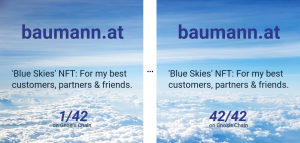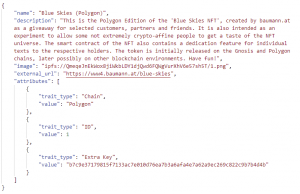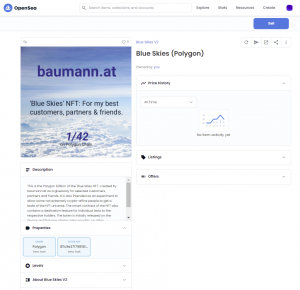Recently, I have been asked more and more often whether I (in my role as a blockchain consultant) can also „make“ NFTs. I already created a few NFTs on OpenSea and mintable.app a long time ago and know the advantages, but also the disadvantages of such platforms. So now it was time to make „real“ NFTs. By that I mean NFTs with their own smart contract, where you can control everything yourself and also add special functions.
Since I’m not an artist, my first question to myself was, „So for which usecase?“ I decided on „give-away“ NFTs that I can give to my clients, partners and friends. Most of them, however, are not extremely crypto-savvy. All the better, then they can get a taste of the NFT universe right away…
So in the course of creating it, I looked at the current toolchains – I had worked with Truffle/Ganache before and with Remix often anyway. Now I got to know Hardhat and I liked it right away. So off I went!
After installing Hardhat (plus accessories), I added an IPFS Node so that I could manage the artwork and metadata more comfortably, and Pinata was added as a pinning service. I also took the dashboard from Truffle and my good old friend Metamask as an interface to the blockchains.
To generate the images, I programmed a script in PHP that cuts out parts (shifted) from a large image (source/licence) and inserts the caption.
The Json metadata were also generated with a script and got extended attributes, which OpenSea can show. All this data was then put on the IPFS.
The Smart Contract is of course ERC721 compatible, there are enough examples on the web. I added a „burn“ function as well as functions to give each NFT a „dedication“, which is then stored on the blockchain.
Speaking of the blockchain: After some deliberation, I decided to put the NFTs on Gnosis (formerly xDai) and Polygon, as these two chains are a more affordable alternative to Ethereum itself, but with the same range of functions.
After a few evenings, everything was ready and the NFTs deployed (Contract on Gnosis, Contract on Polygon).
Now I still have to please my customers, partners and friends with it. Then I will be available for more cool projects 😉
P.S.: By the way, the Polygon version can also be viewed and traded on OpenSea.
Addendum: Viewing/managing NFTs on the smartphone is a problem for various apps. But there is also the Minerva Wallet from my Graz-based friends at lab10 collective eG. that does it really well.
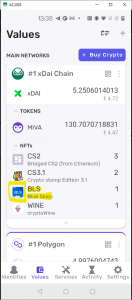 |
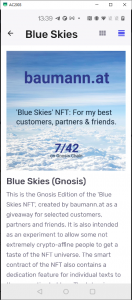 |
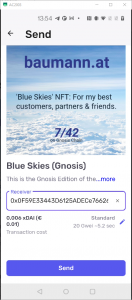 |
Minerva Wallet: Overview of chains, accounts, tokens and NFTs, displaying and sending of NFTs.
Thanks!
